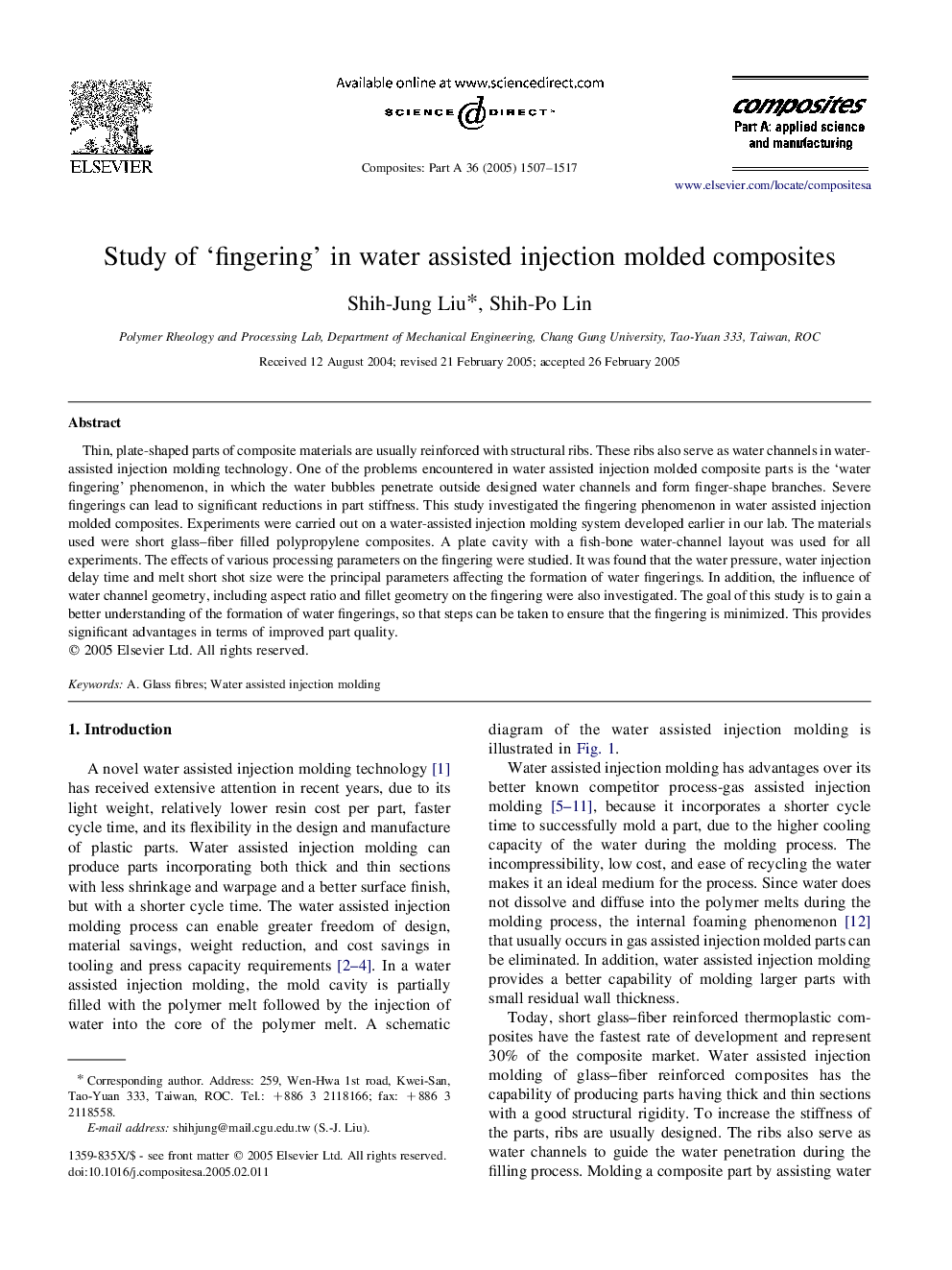| Article ID | Journal | Published Year | Pages | File Type |
|---|---|---|---|---|
| 10627748 | Composites Part A: Applied Science and Manufacturing | 2005 | 11 Pages |
Abstract
Thin, plate-shaped parts of composite materials are usually reinforced with structural ribs. These ribs also serve as water channels in water-assisted injection molding technology. One of the problems encountered in water assisted injection molded composite parts is the 'water fingering' phenomenon, in which the water bubbles penetrate outside designed water channels and form finger-shape branches. Severe fingerings can lead to significant reductions in part stiffness. This study investigated the fingering phenomenon in water assisted injection molded composites. Experiments were carried out on a water-assisted injection molding system developed earlier in our lab. The materials used were short glass-fiber filled polypropylene composites. A plate cavity with a fish-bone water-channel layout was used for all experiments. The effects of various processing parameters on the fingering were studied. It was found that the water pressure, water injection delay time and melt short shot size were the principal parameters affecting the formation of water fingerings. In addition, the influence of water channel geometry, including aspect ratio and fillet geometry on the fingering were also investigated. The goal of this study is to gain a better understanding of the formation of water fingerings, so that steps can be taken to ensure that the fingering is minimized. This provides significant advantages in terms of improved part quality.
Keywords
Related Topics
Physical Sciences and Engineering
Materials Science
Ceramics and Composites
Authors
Shih-Jung Liu, Shih-Po Lin,
